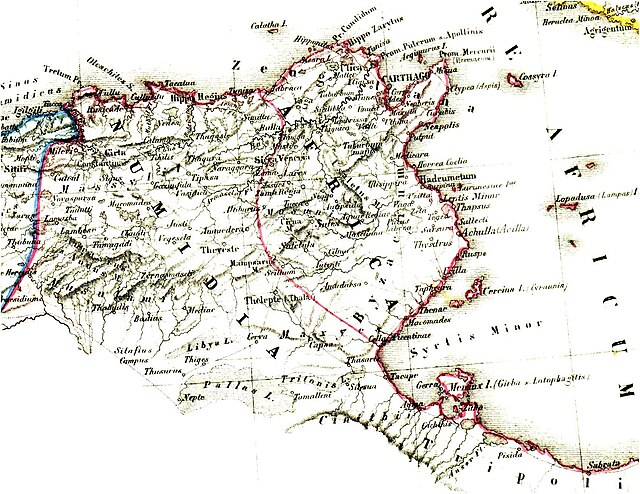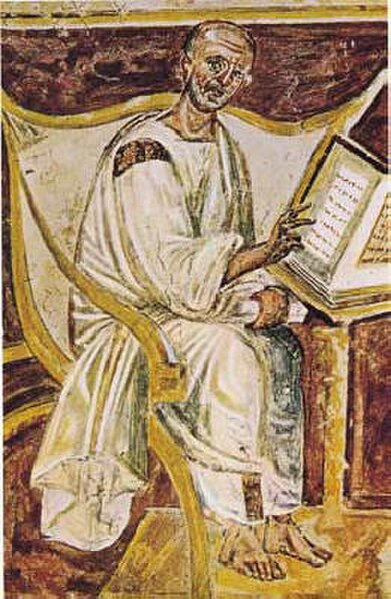African Romance or African Latin is an extinct Romance language that was spoken in the various provinces of Roman Africa by the African Romans under the later Roman Empire and its various post-Roman successor states in the region, including the Vandal Kingdom, the Byzantine-administered Exarchate of Africa and the Berber Mauro-Roman Kingdom. African Romance is poorly attested as it was mainly a spoken, vernacular language. There is little doubt, however, that by the early 3rd century AD, some native provincial variety of Latin was fully established in Africa.
The Fossa regia (in pink) marked the approximate border between the province of Africa and Numidia.
An inscription from one of the gates to the theatre at Leptis Magna, indicating that Latin and Punic co-existed in Northern Africa for centuries.
Fifth century AD inscription at the Leptis Magna forum, Libya.
The earliest known portrait of Saint Augustine in a 6th-century fresco, Lateran, Rome.
Africa was a Roman province on the northern coast of the continent of Africa. It was established in 146 BC, following the Roman Republic's conquest of Carthage in the Third Punic War. It roughly comprised the territory of present-day Tunisia, the northeast of Algeria, and the coast of western Libya along the Gulf of Sidra. The territory was originally and still is inhabited by Berbers, known in Latin as the Mauri, indigenous to all of North Africa west of Egypt. In the 9th century BC, Semitic-speaking Phoenicians from West Asia built settlements along the coast of the Mediterranean Sea to facilitate shipping. Carthage, rising to prominence in the 8th century BC, became the predominant of these.
The amphitheatre of Thysdrus (modern El Djem)
Roman as of Hadrian, 136 AD. An allegory of Africa wearing an elephant headdress is depicted on the reverse.
Juba II, king of Mauretania.
Triumph of Poseidon and Amphitrite showing the couple in procession, detail of a vast mosaic from Cirta, Roman Africa (c. 315–325 AD, now at the Louvre)








